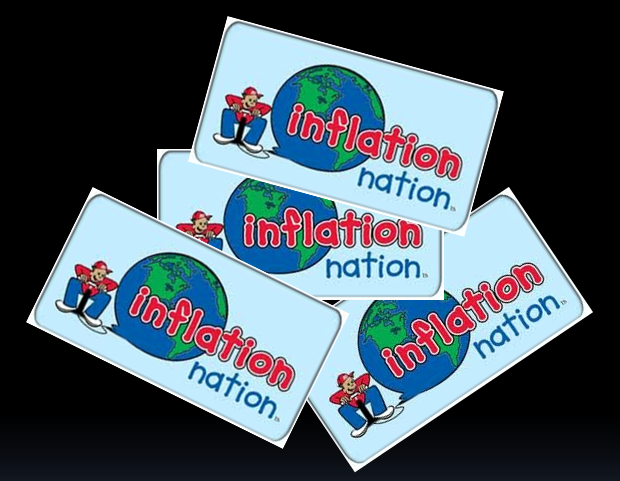
On Sunday, voters in Montenegro turned out in record numbers and gave a collective “thumbs down” to their republic’s loose union with Serbia. Although the final curtain has not yet been drawn on this Balkan drama, when it is, what remains of the former Yugoslavia will disappear, and, after 88 years, Montenegro will once again be independent.
Montenegro’s drive for independence is as much a story about money as it is about Balkan politics. Unfortunately, the money side of the story has tumbled down what George Orwell called a “memory hole.”
So what’s the story? From 1971 through 1991, Yugoslavia’s annualized inflation rate was 76%. Only Zaire and Brazil topped that dreadful performance. But things got worse — much worse. In early 1991, the federal government of Prime Minister Ante Markovic discovered that, late in 1990, the Serbian parliament, which was controlled by Slobodan Milosevic, had secretly ordered the Serbian National Bank (a regional central bank) to issue $1.4 billion in credits to Slobo’s friends. That illegal plunder equaled more than half of all the new money the National Bank of Yugoslavia had planned to create in 1991. Besides lining the pockets of a good many Serbian communists, it sabotaged the Markovic government’s teetering plans for economic reform. It also fanned the flames of nationalism in Yugoslavia and hardened the resolve of the leaders in Croatia and Slovenia to break away from the Socialist Federal Republic of Yugoslavia.
Without the Croats and Slovenes to fleece, Milosevic turned on his “own” people. Starting in 1992 and lasting 24 months, what was left of Yugoslavia endured the second-highest and second-longest hyperinflation in world history, peaking in January 1994 when prices increased by 313,000,000% in one month. In all, there were 14 maxi-devaluations during the hyperinflation, with each of the final three exceeding 99.9%, completely wiping out the dinar’s value in November ‘93, December ‘93 and January ‘94.
Only Hungary, in 1946, recorded a higher rate, and only the Soviet Union suffered hyperinflation longer, for 26 months in the early 1920s. Even Weimar Germany’s much-recounted hyperinflation of 1922-23 was far less virulent than the repeated decimation of the Yugoslav dinar. For a sense of its impact on the local population, imagine the value of your bank accounts in dollars and then move the decimal point 22 places to the left. Then try to buy something.
Yugoslavia’s monetary orgy finally came to an end when the Topcider mint ran out of capacity. The hyperinflation was transforming 500-billion-dinar bills into small change before the ink had dried. But Milosevic’s monetary mischief was nothing new. The old Serbian kings were notorious coin-clippers. As long ago as the early 14th century, King Milutin minted imitation Venetian silver coins at Novo Brdo and Prizren, located in what is now Kosovo. These fakes contained only seven-eighths as much silver as the real things. Venice banned the fakes, and, in his “Divine Comedy,” Dante denounced “the King of Rascia” as a counterfeiter.
In 1999, President Milo Djukanovic (now prime minister) decided he wanted Montenegro independent and out from under Serbia’s political yoke. I counseled that he play the currency card. Over the decades, the Yugoslav dinar had been completely discredited. For most Yugoslavs, the mighty deutsche mark was the unofficial coin of the realm. That was the reality. In addition, I repeated the great Austrian economist Ludwig von Mises’s argument that sound money “was devised as an instrument for the protection of civil liberties against despotic inroads on the part of governments. Ideologically it belongs in the same class with political constitutions and bills of rights.”
Mr. Djukanovic knew that the deutsche mark was his trump card, one that would pave the way for reestablishing Montenegro’s sovereignty. On Nov. 2, 1999, he boldly announced that Montenegro was dumping the Yugoslav dinar and officially adopting the deutsche mark as its national currency (the DM was subsequently replaced by the euro in January 2002). There were no International Monetary Fund bureaucrats to contend with (at the time, Yugoslavia had no formal relations with the IMF and Montenegro was part of the rump Yugoslavia). Civil servants from Washington had not yet located Podgorica, and the NGO invasions weren’t even a glimmer in any planner’s eye. Furthermore, the so-called experts in Brussels hadn’t yet issued their bizarre 2000 edict on the euro, which stated that “it should be made clear that any unilateral adoption of the single currency by means of ‘euroisation’ would run counter to the underlying economic reasoning of [the European Monetary Union].” Mr. Djukanovic had room to maneuver and coolly play his card. By doing so, the die was cast for Sunday’s election.
Author Steve H. Hanke

0 responses on "Inflation Nation"